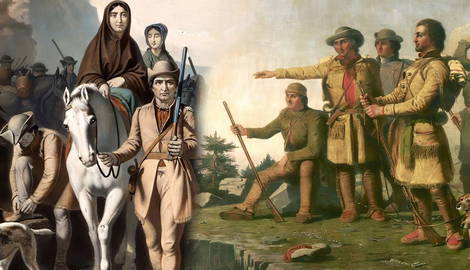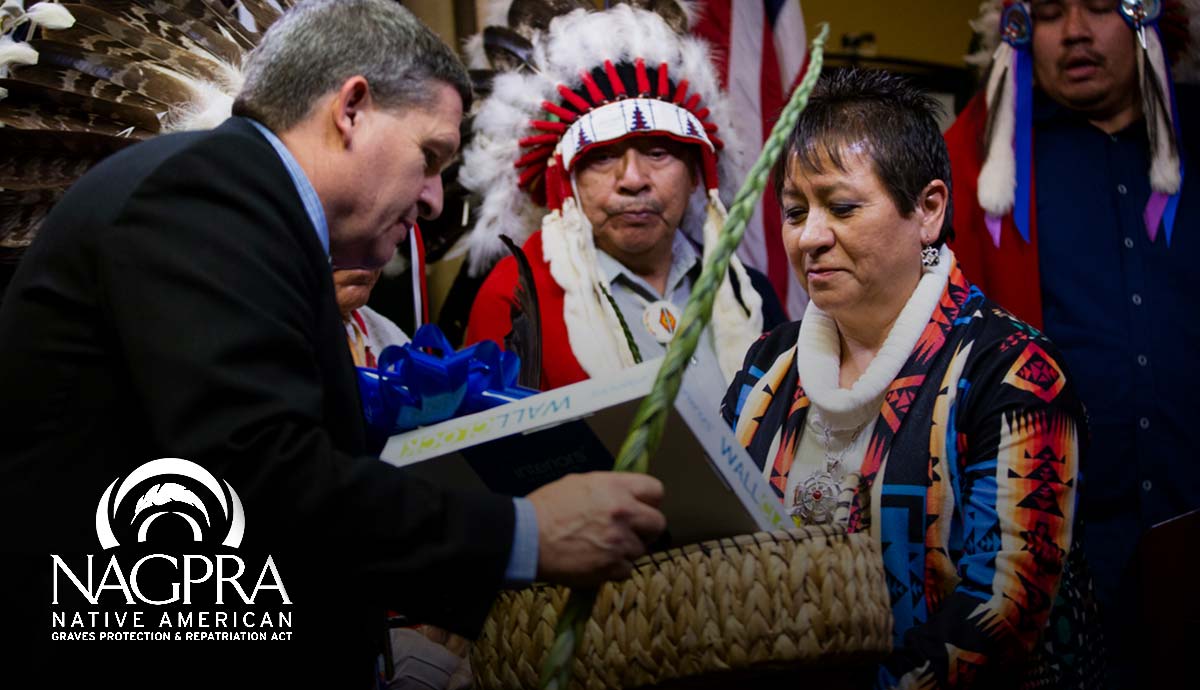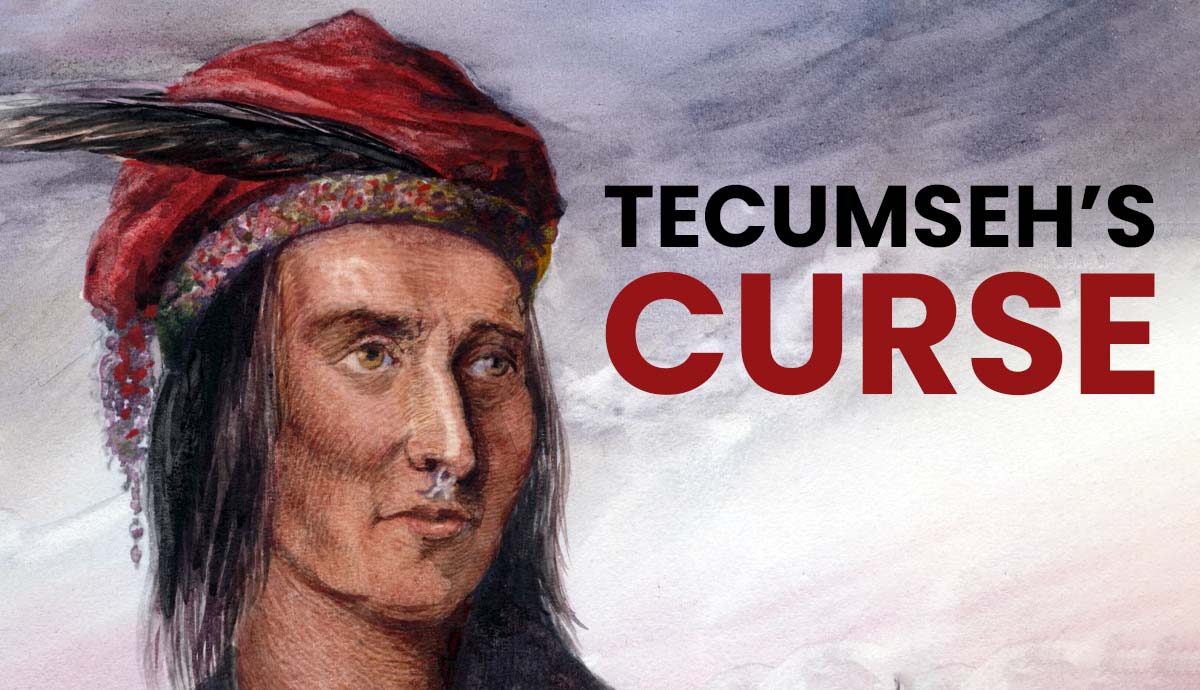
As the United States built its identity as a separate country, Daniel Boone was creating his own identity as a trailblazer. He forged new paths in hopes of creating a better life for his family and the community around him while at odds with nature, indigenous peoples, and the Revolutionary War that raged throughout the countryside. His wanderlust, coupled with a sense of adventure, made him the perfect candidate to become one of the nation’s first frontiersmen, whose idyllic legend would live on for centuries after his death.
Childhood in the Forest

Born on November 2, 1734 in Oley Township, Pennsylvania, Daniel Boone was the sixth of eleven children welcomed by Sarah and Squire Boone. Oley Township is located northwest of Philadelphia, and like many early settlers of Pennsylvania, the Boones were Quakers. However, when Daniel was fifteen, his family broke with the Society of Friends, and the family headed south, first to Virginia, then eventually settling in North Carolina.
Though he had many siblings, much of Daniel’s childhood was spent alone in the woods. He was a natural-born wanderer and enjoyed hunting, fishing, and trapping, as well as studying nature and the life forms within it. One of his main chores as a young man was to take the family’s cattle out to graze during the day, and he would take advantage of these trips to utilize his excellent marksmanship and contribute to the family’s larder with deer and other game.
A Military Man

When the Boones moved south, they discovered that the area they chose to inhabit, the Yadkin River Valley, was rife with conflict. The indigenous groups that occupied the area were eager to defend their homeland against encroachment from settlers, and skirmishes occurred frequently.
It is unknown which specific tribe(s) conflicted with the settlers, as several occupied the region at the time of white settlement, including the Catawba and Cherokee. To protect the land they had taken for themselves, the settlers created a local militia that would be prepared to fight against the Native Americans. Though he was only fifteen when his family moved to the area, Daniel eagerly joined the group.

Five years later, he would fight for the British in the French and Indian War. He served under Major General Edward Braddock, and it was during this time he met a man named John Findley who made his living as a trader. Findley regaled Boone with stories of a place to the west known as Kentucky. He spoke of the bountiful game, beautiful mountains, and untouched land. It sounded like paradise to Daniel, and Findley’s stories planted the seeds of his dreams to eventually travel there himself. Luckily, Boone survived the famous Battle of Monongahela, also known as Braddock’s Defeat, and the war at large. He returned home to North Carolina with new ideas for the future.
Focus on Family

After his stint in the army, Daniel returned home, where he briefly courted Rebecca Bryan. They married on August 14, 1756. Despite his frequent traveling, their marriage lasted almost sixty years and produced six sons and four daughters. The emphasis Boone placed on his marriage is evident in one of his more famous quotes: “All you need for happiness is a good gun, a good horse, and a good wife.”
Rebecca was also good with a gun and, like her husband, enjoyed the natural beauty the world had to offer. During the postwar years, Boone spent time working as a professional hunter, leaving home for long stretches to pursue deer and other game, then returning home to sell his harvest, including meat and deerskins.
Adventure Awaits

In 1769, John Findley came to North Carolina and showed up at his old friend’s door. He had a proposition that he hoped Boone would be interested in. He wanted Daniel to join him and four others on a trip to Kentucky to hunt, trap, and explore. He remembered Boone’s thirst for adventure and dreams of the promised land that seemed to echo in his stories and figures Boone would be eager to come along. Findley was right, and soon Daniel was on his way to make his visions come alive. The men traveled through the Appalachian Mountains and the Cumberland Gap, building a base camp near what is now Irvine, Kentucky. They would spend the next year exploring, hunting, and trapping before Boone returned home with a renewed vigor and ideas for the future.
Moving West

Two years after he returned home, Boone led his family and other settlers west to create a permanent settlement in Kentucky. However, this trip would be short-lived. Along the way, the group was ambushed by a group of Shawnee and confederated tribes. Several people were killed in the attack, including Boone’s eldest son James. The group also lost a great deal of their supplies and decided, in their grief, to turn back.

Again, two years later, Boone decided to try moving west, this time in the employ of the Transylvania Company. Transylvania was a land investment company that worked to develop formerly wild lands for settlement. Along with about thirty others brandishing axes, Boone worked to blaze a path into Kentucky, which would later be called the Wilderness Road. At the conclusion of the project, he established a fort and built a town there called Boonesborough. He sent for his wife, and she, along with their daughter, Jemima, became the first white women to permanently settle in Kentucky.
The Revolution Unfolds

Despite his western proximity, Boone couldn’t escape the American Revolution permeating the country. As 1777 arrived, the British increased their efforts to disrupt the Western settlements and undermine the spread of the American colonies. Crops were destroyed, and settlements were directly attacked as British troops ravaged the countryside. Boonesborough was not exempt from these targeted attempts at destruction and was invaded in April 1777. During this skirmish, Boone himself was shot in the ankle. However, his settlement remained intact, and his ankle healed, but he was sidelined for several weeks. Boone served as a captain in the local militia throughout the duration of the Revolution.
Becoming Shawnee

In 1778, Boone led a group of locals to the Blue Lick salt flats to gather salt for their community. On this trip, they were attacked by a contingency of Shawnee warriors. The group was on their way to attack Boonesborough, and to protect those left behind, Boone negotiated the surrender of the salt gathering group as hostages to delay the attack. The Shawnee leaders agreed, and Boone and his men were taken back to the Shawnee village.
They were held captive for about five months. During this time, several of the men were adopted into the tribe, including Boone himself. This was a common practice in which respected hostages were taken into families who had lost sons in battle. He was adopted by Shawnee chief Blackfish, who is also known to history as the adoptive father of the legendary Tecumseh.
Boone was respected by his tribal fellows for his adept hunting skills, and Blackfish gave him the name Sheltowee, meaning “big turtle.” That autumn, Boone heard talk of plans to attack Boonesborough once again. When he had the opportunity, he escaped and made his way home to warn and prepare his community. He and only 60 men managed to hold off about 400 Shawnee warriors in a September attack during a siege that lasted nine days.
Struggling Celebrity

Boone’s adventures made him famous throughout Kentucky and beyond. Once he returned home, he went on to serve three years in the Virginia legislature (Kentucky at that time was part of the Virginia colony rather than its own independent colony).
Despite his fame and success as a hunter that continued during this time, Boone and his family struggled financially. In 1799, they moved further west to Missouri to escape debt and get a fresh start.
In his increasing age, Boone’s eyesight was a challenge, but he continued to hunt when he could. In Missouri, he worked as a syndic, a type of municipal magistrate who acted similarly to a judge. Rebecca died in 1813, and after that point, Daniel lived with his children. He passed away at his son Nathan’s home in 1820.
Modern Ties

Daniel Boone’s legacy persists to this day. Even after he aged and no longer sought out adventure, dozens of travelers made it a point to stop at his home and visit with him on his porch, just to say they had met the man who was the legendary Daniel Boone. Their secondhand stories helped to deepen the celebrity and mythology that surrounded Boone.
He has since been immortalized in countless books, television shows, movies, and more.
In 1776, for example, Boone rescued his daughter Jemima and two of her friends after they had been kidnapped by Shawnee while canoeing near Boonesborough. This saga was immortalized in The Last of the Mohicans, James Fenimore Cooper’s classic novel.
Movies that recount his adventures include Daniel Boone (1936) and Daniel Boone, Trailblazer (1956). Several historical sites are dedicated to Boone, including his birthplace, the Daniel Boone Homestead, and Fort Boonesborough State Park. Centuries beyond his death, Boone’s legacy as an American pioneer refuses to waver, encompassing the spirit of exploration and oneness with nature that helped build the United States.










